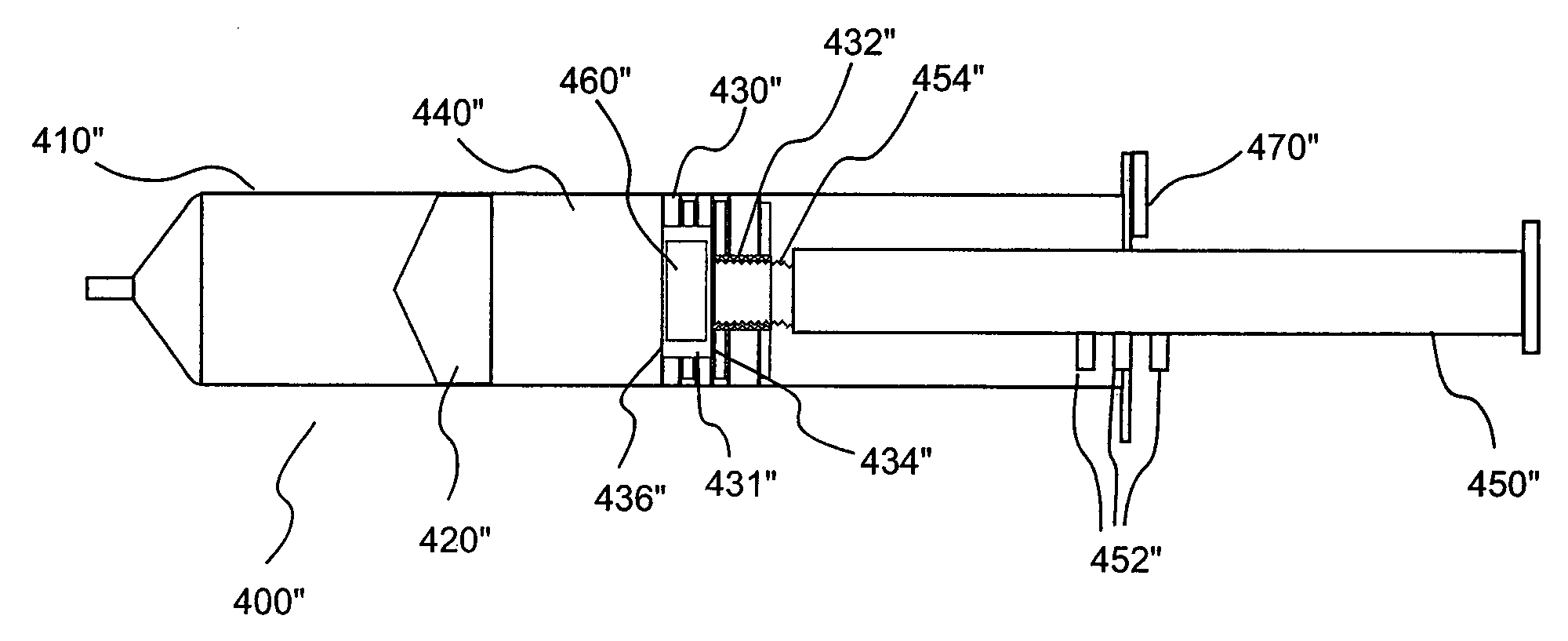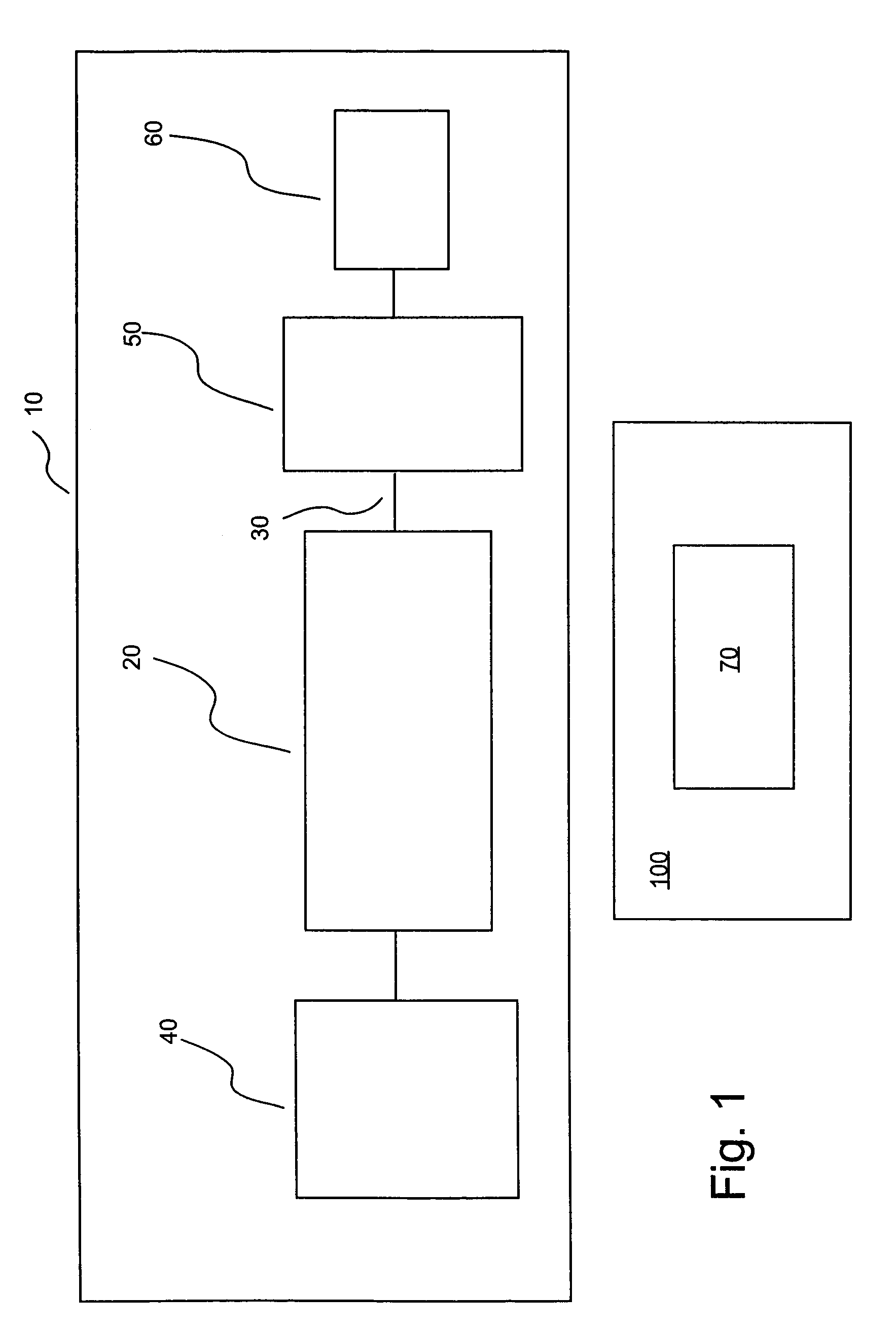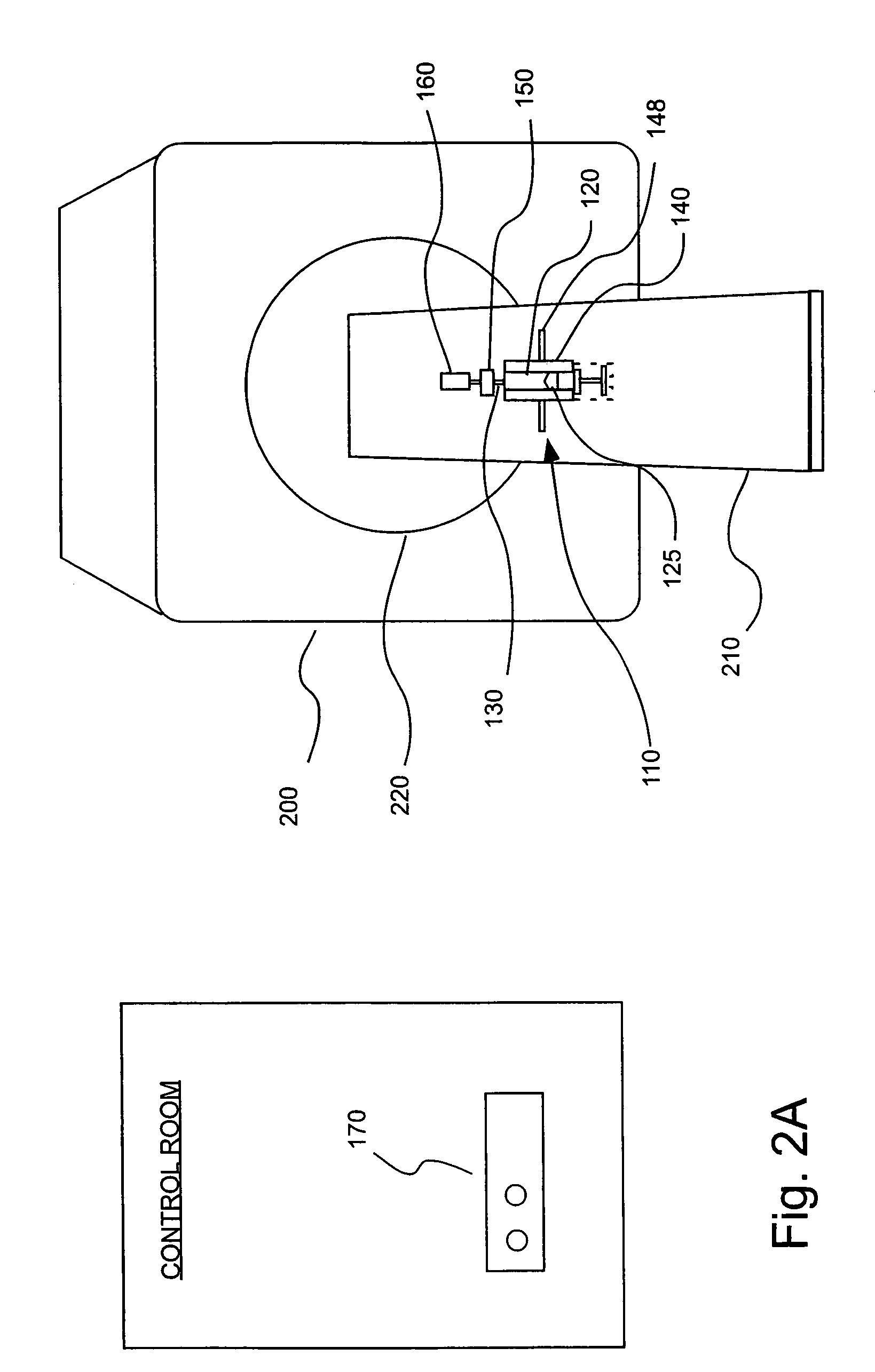Devices, systems and methods for delivery of a fluid into a patient during a magnetic resonance procedure
a technology of magnetic resonance and fluid injection, which is applied in the field of devices, systems and methods for delivering fluid into patients during magnetic resonance procedures, can solve the problems of limited use, limited use of powered injectors, and relatively high cost of mri procedures, and achieves the effects of easy fabrication, minimal time required for setting up of the device of the present invention, and convenient patient wearability
- Summary
- Abstract
- Description
- Claims
- Application Information
AI Technical Summary
Benefits of technology
Problems solved by technology
Method used
Image
Examples
Embodiment Construction
[0049]In general, the present invention provides infusion or injection devices and systems that are relatively easy to operate. The injection devices are preferably readily portable and can even be patient wearable.
[0050]In the embodiment of the present invention illustrated in FIG. 1, an injection or infusion device 10 includes a storage container or chamber 20 (for example, a prefilled syringe) in which a fluid for injection into a patient is stored. Injection device 10 includes an outlet 30 in fluid connection with chamber 20 and through which fluid exits chamber 20 to be injected into the patient. Injection device 10 also includes a pressurizing mechanism 40 through which force / pressure is applied to the fluid within chamber 20 to cause the pressurized fluid to exit outlet 30. Injection device 10 further includes an actuator 50 to initiate (and, possibly, terminate) flow. Actuator 50 can, for example, be remotely operated via a controller from, for example, control room 100. Dev...
PUM
 Login to View More
Login to View More Abstract
Description
Claims
Application Information
 Login to View More
Login to View More - R&D
- Intellectual Property
- Life Sciences
- Materials
- Tech Scout
- Unparalleled Data Quality
- Higher Quality Content
- 60% Fewer Hallucinations
Browse by: Latest US Patents, China's latest patents, Technical Efficacy Thesaurus, Application Domain, Technology Topic, Popular Technical Reports.
© 2025 PatSnap. All rights reserved.Legal|Privacy policy|Modern Slavery Act Transparency Statement|Sitemap|About US| Contact US: help@patsnap.com



